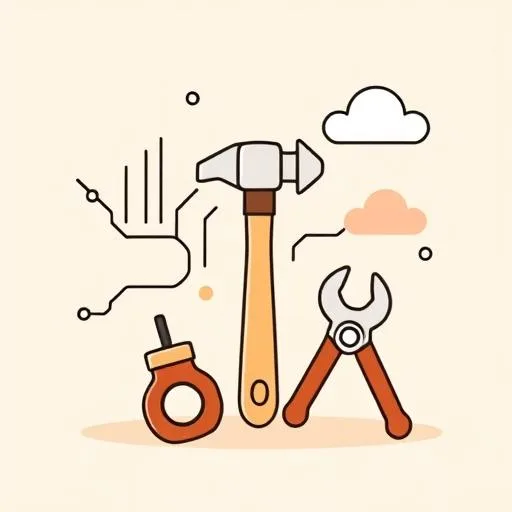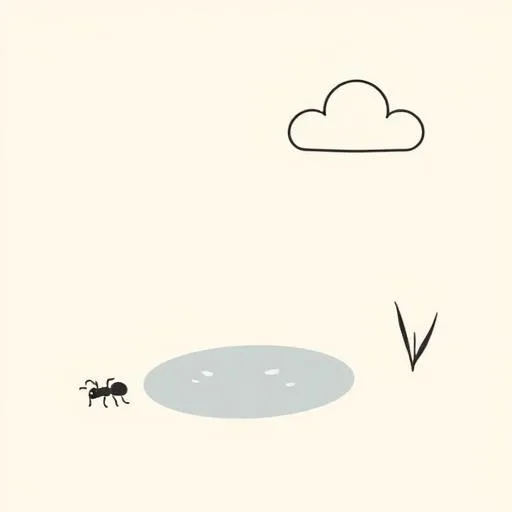
Picture the grin on your child’s face when they finally fit the right block into the right hole—eyes sparkling like holiday lights. Now zoom out to the grown-ups writing tomorrow’s smart-apps: they’re hammering screws with wrenches, too, because the coding tools we have were never built for the AI jobs we’re asking them to do. That connection smacked me between the eyes while I watched my seven-year-old “debug” her cardboard fort. If even world-class engineers need a better wrench, what does that say about the tools we hand our kids?
When the Wrench Is Too Big—For Coders AND Kids

Ron Minsky’s Signals and Threads chat drops a startling truth: today’s superstar language, Python, can’t even match simple patterns without strapping on a backpack of add-ons—like asking a toddler to wrangle a power drill just to make play-dough snakes. For parents, that lands close to home. We flip heavy mattresses so little feet can climb the bed, we swap sharp knives for butter cutters, we serve kimchi alongside peanut-butter tacos because taste buds need bridge-building, too. The magic happens when the tool finally fits the hand—friction drops, confidence soars, and curiosity races ahead of frustration. Why settle for anything less in the apps that will shape our kids’ future?
Peek-a-Boo, Leaf Piles, and Secret Pattern Powers

Pattern matching isn’t ivory-tower jargon; it’s the rhythm hiding in peek-a-boo, in the way your kid spots red cars from the stroller, in the lullaby chorus that always follows the verse. Engineers want languages that see those repeats without breaking a sweat, and kids practice the same skill every time they line up acorns from smallest to tallest. Here’s the mind-blower: researchers say future ML tools must squeeze “as much work as possible per token”—fancy talk for do more with less clutter. That’s precisely the elegance our children chase when they turn a cardboard box into a spaceship with two crayons and a strip of tape. Next playground trip, try asking: “How many different triangles can you find on the climbing frame?” or “What shape will the next cloud be?” Those five-minute hunts are stealth workouts for the same mental muscle tomorrow’s coders are begging for.
LEGO Castles = Sneaky Data Science Class

Engineers toss around the phrase “algebraic data types.” Translation: snap simple bits together to cook up complex wonders—sound familiar? Give a kid one LEGO brick, you get a paperweight; hand over a bucket, welcome to an intergalactic spaceport. Chris Lattner’s new language, Mojo, aims for the same upgrade: approachable on the outside, rocket-grade under the hood. Our living-room lesson? When your child stages a sock-puppet musical, she’s structuring data—characters (types) interacting through plots (functions). Every collapsed pillow-tower is a crash course in debugging; every rebuild adds resilience along with those giggles. Frame playtime as their first programming language, and trial-and-error becomes the most fun homework ever assigned.
Slow-Down Superpower: Less Rush, More Ripen

While Silicon Valley races to shave milliseconds, our kids flourish when we protect the pause. Coders delete “unnecessary control structures” to let programs breathe; we can delete needless drills to let childhood breathe. Trade twenty minutes of swipe-time for ant-trail observation on the sidewalk. Swap flash-card apps for dinnertime questions like “What surprised you today?” Unstructured minutes—puddles becoming oceans, sticks morphing into sceptres—stretch mental elastic better than any scripted lesson. Could this be the key: letting curiosity ferment like slow-simmering kimchi until the flavor of deep understanding gets almost irresistible? Picture a Saturday picnic with zero agenda beyond cloud-spotting. Resilience takes root in moments no algorithm can quantify.
Source: Why ML Needs a New Programming Language, Signals and Threads, 2025/09/05 11:33:48
